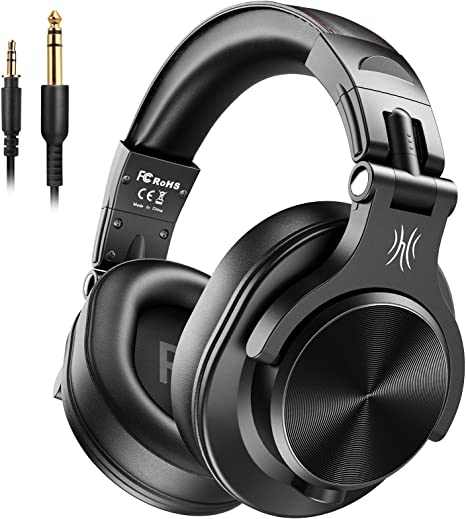The Ritual of Sound: Rediscovering Audio History with the Shanling EC ZeroT CD Player
Update on July 15, 2025, 3:52 a.m.
It was 1982. The world was promised a revolution in a shimmering, 120-millimeter disc. “Perfect Sound Forever,” the slogan proclaimed. The Compact Disc arrived as a beacon of digital precision, a clean break from the pops, crackles, and hiss of vinyl. It was the future, and for a glorious couple of decades, it was the undisputed king of audio, a tangible icon of musical ownership.
Then, the future changed. The internet quickened its pace, and music became data, compressed and streamed, liberated from its physical shell. We gained a universe of songs in our pockets, an unimaginable convenience. Yet, in gaining everything, we lost something elemental: the ritual. The deliberate act of choosing an album, the gentle whir of a disc loading, the commitment to a complete work of art. In a world of infinite playlists, we began to miss the focus of a single album.
This brings us to a fascinating cultural crossroad, a place where a device like the Shanling EC ZeroT exists. It is far more than a nostalgic gadget. It is a profound engineering statement, a physical argument that the journey of sound is not a straight line forward, but a circle. It’s a device that asks a question: what if the path to a more perfect sound wasn’t about abandoning the past, but about understanding it more deeply?

The Analog Echo: The Enduring Soul of the Vacuum Tube
To understand the EC ZeroT’s unique character, we must first travel back long before the digital age, to the dawn of electronic sound. For the first half of the 20th century, the world glowed with the warm light of the vacuum tube. From the first trans-Atlantic radio broadcasts to the golden age of Hi-Fi in the 1950s and ’60s, the tube was the undisputed heart of audio amplification. Its eventual replacement by the smaller, cooler, and more efficient solid-state transistor was seen as a triumph of modern engineering. Yet, a legion of listeners never let go of the “tube sound.”
This enduring allure isn’t mere nostalgia; it is rooted in physics and psychoacoustics. When a vacuum tube amplifies a signal, it introduces minute, musically related artifacts known as harmonic distortion. Specifically, it tends to generate strong even-order harmonics. To the human ear, a second-order harmonic is the same note as the fundamental, just an octave higher; a fourth-order harmonic is two octaves higher. These are the most consonant intervals in music. This “distortion,” therefore, doesn’t corrupt the signal so much as it subtly enriches it, adding a layer of harmonic density that we perceive as “warmth,” “richness,” and “body.” It’s a beautiful, euphonic coloration.
The historic challenge, however, has always been the tube’s delicate nature. They are essentially glass bottles with sensitive components inside, making them susceptible to physical vibrations—a phenomenon called microphonics, which translates into unwanted noise. This made them seemingly impossible for a truly portable, high-performance device. Shanling’s solution is a masterclass in modern engineering. They selected two JAN6418 tubes, military-grade components prized for their low power needs and robustness. More critically, they engineered a specialized anti-vibration internal structure, a shock-absorbing cradle that isolates these glass hearts from the outside world. It’s how they managed to tame this beautiful, wild technology and place its warm, glowing soul right in the palm of your hand.

The Digital Heart with an Analog Pulse: The Philosophy of the R2R DAC
If the tubes provide the soul, the unit’s digital-to-analog converter, or DAC, provides its unwavering heart. The DAC is the most critical translator in the audio chain, converting the cold, hard logic of digital 1s and 0s into the flowing analog waveform that our ears understand as music. Nearly every modern device uses a Delta-Sigma DAC, a brilliant and efficient architecture that uses immense processing speed and complex algorithms to estimate and approximate the analog signal. It’s a modern interpreter, fluent and fast.
The EC ZeroT opts for a different, older, and far more demanding philosophy: the R2R ladder DAC. Imagine a master sculptor tasked with recreating a statue from a precise digital blueprint. The Delta-Sigma approach would be to use a state-of-the-art 3D printer, building the form layer by layer with millions of tiny dots. The R2R approach is the sculptor themselves, using a set of perfectly calibrated chisels to carve the statue directly from a block of marble. Each bit of the digital signal corresponds to a specific, precision-matched resistor in a network—the “ladder.” There is no estimation, no predictive algorithm. The resulting analog voltage is a direct, discrete, and mathematically pure reflection of the original digital value.
This choice is deeply philosophical. In a world of digital approximation, the R2R DAC represents a commitment to absolute digital honesty. It presents the data as it is, with a character often described as more natural, textured, and solid. When paired with the artistic coloration of the vacuum tubes, a fascinating synergy emerges: the R2R DAC provides a ruthlessly accurate foundation, upon which the tubes paint their rich, harmonic hues.

The Unseen Foundation: The Physics of Power and Stability
This delicate dance between digital precision and analog grace would be meaningless without an unyielding foundation. Two often-overlooked elements provide this: power and stability.
First, the power. The EC ZeroT employs two high-current TPA6120A2 amplifier chips from Texas Instruments. Think of an amplifier as the engine for your headphones. A powerful, high-current engine doesn’t just make things louder; it provides superior control. It can grip the headphone’s diaphragm with authority, starting and stopping its movement with lightning speed. This translates into tight, impactful bass, soaring dynamics, and the effortless rendering of complex musical passages. It ensures that the nuance uncovered by the DAC and tubes isn’t lost in the final, critical step of the journey to your ears.
Second, the stability. A CD player’s laser assembly is on a microscopic tightrope walk. It must trace a spiral track less than a micron wide while the disc spins hundreds of times a minute. The slightest external vibration can knock it off course, causing the read errors that manifest as skips or, more subtly, as digital “jitter”—a timing inconsistency that can smear the clarity of the sound. The player’s active magnetic pressure balance system functions like a sophisticated gyroscopic stabilizer, creating a stable platform for the laser assembly to do its work, unperturbed by the motion of the outside world.
The Circle, Complete: The Return to Listening
In the end, the Shanling EC ZeroT is not a collection of impressive specifications. It is a holistic, beautifully realized system. It represents a reconciliation, a place where the cold precision of the digital world and the warm, human grace of the analog world cease their opposition and begin a harmonious dialogue.
Using it is an experience that transcends the technical. The deliberate selection of a cherished album, the satisfying click of the tray closing, the faint glow of the tubes visible through the small window—this is the ritual we lost. It’s an act of commitment, a choice to focus, to listen deeply and without distraction. In a world that relentlessly rushes us forward, devices like this are quiet but powerful statements. They remind us that the most meaningful innovations are often those that help us rediscover something timeless and profoundly human: the simple, sacred act of listening.




























